Why Japanese cars are the most popular in the world
The reasons for the popularity of Japanese cars.
It is difficult now to remember how many generations ago Japanese cars were transformed from a cheap little uzrocnik vehicles that appeared on the world market to become cheaper alternative to German and American cars. But one thing is certain, imperceptibly, the popularity of cars from the land of the rising sun really took market share from many global companies.
For many around the world, Japanese cars have become faithful companions in everyday life, transporting us from home to work and back, to the shops, to school, etc. But has anyone wondered why Japanese cars gained recognition in the global market, becoming one of the most popular in the world?
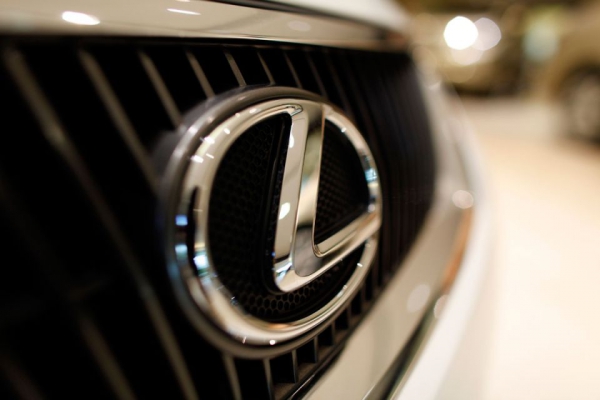 We are confident that many of our readers ever owned Japanese cars (or are now). It just hurts that Japanese cars are not only popular in many countries, but demand in Russia.
We are confident that many of our readers ever owned Japanese cars (or are now). It just hurts that Japanese cars are not only popular in many countries, but demand in Russia.
As it happens, but with the collapse of the Soviet Union and the fall of the iron curtain in our country has started import of Japanese products immediately took the leading place.
A second wave of popularity of Japanese cars in our country occurred in 2000-e years when the young generation people paid attention to the Japanese auto industry after the release of the first series of the fast and the Furious. As a result, in our country there are new fans of Japanese cars.
The first time in our country, the most popular variety of Japanese sports cars. Then there is a demand for luxury vehicles. Then came the demand for SUVs.
 One of the smartest moves by Toyota in the history of the world, is the production of sports cars under the Lexus brand
One of the smartest moves by Toyota in the history of the world, is the production of sports cars under the Lexus brand
Today, the most popular Japanese cars in Russia are such models as the Toyota Camry, Toyota RAV4, Toyota Corolla, Toyota Land Cruiser, Mada CX-5, Mazda 3, Mazda6, Subaru Forester, and others. Modern Japanese models are the perfect vehicles for everyday travel and are a great alternative to the German and American cars that cost much more.
 Unlike the 1980s and 1990s, when Japanese cars were not a good reputation, today most of the vehicles of the rising sun have a gold standard needs for users: availability, reliability, quality, safety and cost.
Unlike the 1980s and 1990s, when Japanese cars were not a good reputation, today most of the vehicles of the rising sun have a gold standard needs for users: availability, reliability, quality, safety and cost.
It is the ratio and allowed Japanese cars to win the major share of the world market.
Let’s learn in greater detail how Japanese automakers were able to win the trust of consumers around the world, which, as it turned out, it was a very hard, given the incredible competition with German and American cars.
We have selected for you the main reasons why Japanese cars are popular not only in Russia but throughout the world.
1) Practicality and efficiency
 The 2017 Subaru Impreza hatchback offers an incredible balance between sportiness and practicality
The 2017 Subaru Impreza hatchback offers an incredible balance between sportiness and practicality
Japanese automakers have been offered a lot of really beautiful cars for many years. But, nevertheless, in most cars, we often see that the car brands land of the rising sun put on functionality.
That is, auto design is usually in the background. That is why the Japanese have many models that mean plain, but, nevertheless, they are high-tech amazing cars.
In the 70-ies and 80-ies of the Japanese car brands began to produce a compact front wheel drive models, which differed from competitors increased interior space, was more economical, more reliable, and most importantly, cheaper overall. As it turned out, for consumers it was important in combination with reliability.
In 90-e years, brands such as Subaru and Toyota first offered the world the public available all-wheel drive vehicles in all classes, ranging from hatchbacks and ending with the minivans.

This commitment to innovation also affected the interiors of the cars.
For example, Honda has repeatedly surprised its high-tech Central console that expand the interior space for the driver and front passenger, Nissan is constantly offering solutions to increase interior space for its products, and Toyota is experimenting on various modifications of seats.
In General, starting from the very beginning, automakers from Japan are betting on the space inside the car on the basis of simple technologies. That is why for a long time for the Japanese car companies the quality and materials used in the interior was on the second plan. The main thing was to please the customer, giving him more space inside the cars that are offered at a reasonable price.
2) creativity and futuristic ideas
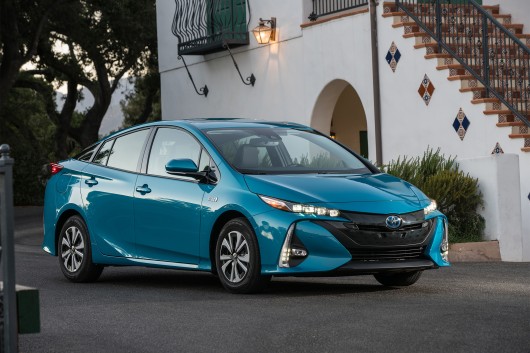 2017 Prius Prime – Sportiness, design, efficiency and high technology
2017 Prius Prime – Sportiness, design, efficiency and high technology
Someone may blame Japanese automakers for their conservatism and simplicity of many models of cars. But in fact, many companies from the country where the sun rises, can boast the innovative innovative developments.
For example, how you think, who of the world automotive market is obliged to the emergence of hybrid cars? Of course Toyota and Honda, who first began to mass produce hybrid cars and was not afraid to bring them into the world’s largest car market in the United States.
As a result, today most car brands are manufacturers of hybrid products. But in spite of this, in fact, many companies produce hybrid vehicles, based on technologies that are proposed to the Japanese brands.
A pioneer in the hybrid car was the Toyota Prius, which in a short time by the standards of the automotive industry became popular all over the world.

Currently, Toyota has gone further and released a model with hydrogen technologies to the launch of serial production of the Toyota Mirai.
And it is possible that hydrogen energy as well as hybrid technology will become popular in the near future. Don’t believe? But remember that hybrid cars, when the Toyota Prius, too, no one believed, and you will not then so critical.
So blame the Japanese company for the adherence to the old classical techniques impossible. Although it is recognized that many of the decisions that we see in many Japanese models, most likely, will long be used in future models. But many Japanese brands can be understood. After all, why reinvent the wheel when it is already invented and good demand.
3) a Large variety of models of different classes for different needs
 Mazda CX-9 is one of the most popular family of Japanese cars in the world
Mazda CX-9 is one of the most popular family of Japanese cars in the world
Japanese automakers currently offer consumers a huge variety of models, which can meet the needs of many people.
For example, currently you can easily pick up a Japanese car in different categories, ranging from a small micro cars to large SUVs and minivans.
Especially in recent years are developing crossovers that have recently looked weaker than their competitors. But in recent years many models of crossovers significantly transformed, becoming not only beautiful but also more practical.
And there is a feeling that, becoming better and better, after a few years, many of the Japanese model will look quite on the level of many American and German cars.
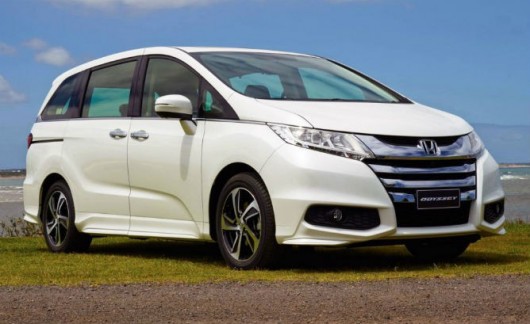
The same goes for minivans, which also significantly changed for the last time. Today, Japanese automakers produced a lot of amazing MPVs that are not only beautiful but also super practical.
In particular, there are sport and version that 10 years ago seemed impossible.
It is worth noting about ordinary passenger family cars that also are becoming every year better and better. That is why the demand for Japanese cars is still growing unlike many of its competitors, whose sales of passenger cars dropped significantly due to a shift in demand towards crossovers and SUVs.
4) the Localization of production in the markets
 Assembly line Toyota in Saint-Petersburg
Assembly line Toyota in Saint-Petersburg
Previously, Japanese manufacturers usually produce their products mainly in their own country. But, since the conquest of the American market, many companies decided to move their production to U.S. soil. For example, Honda opened its plant in the United States in 1982. Then it was followed by other Japanese brands, having invested over the years billions of dollars into the country’s infrastructure and created thousands of jobs.
The same applies to our country. In order to conquer the Russian car market, Japanese companies also opened their production in the Russian Federation. This allowed not only to reduce the cost of production, offering consumers more affordable price tags, but also to attract the attention of the public.
Today the Japanese car manufacturers have factories around the world. This allows them to significantly reduce the cost of delivery and Assembly of cars, which naturally affects sales prices.
As you know, the ratio of quality and value the main criterion when choosing a car, consumers. That’s why in our country the popularity of the new cars from the land of the rising sun is not falling, but on the contrary only grows.
5) the Japanese know how to make pickups
 Nissan Titan
Nissan Titan
When Japanese automakers wanted to enter the American market, of course, the main headache for them was a popular American SUV pickups. Unfortunately, at an early stage the Japanese could not offer something worthwhile in this class.
But then the market began to appear unusual pickups, which on the one hand could not compete with powerful monsters, but on the other hand differed outstanding reliability, quality and low cost.
In the end, the Americans were unable to ignore cheap Japanese pickups and began to disassemble them hotcakes.
So in this segment of automobile industry the Japanese automobile companies have something to offer.
6) Japanese cars can be a collector’s item
 Cult car the Datsun 280Z
Cult car the Datsun 280Z
In the first years of the conquest of the world’s largest car market, Japanese cars are not associated with collectibles, as it was believed that the Japanese auto industry may not be subject to collections. But then, decades later, in many countries, many well-known models of cars have become iconic and are now expensive collectibles.
For example, today at different world auctions a rare Toyota 2000GT will cost about $ 1 million. Also a collectors car, literally chasing Toyota FJ Land Cruiser and Honda CRX.
7) Japanese powerful cars and supercars
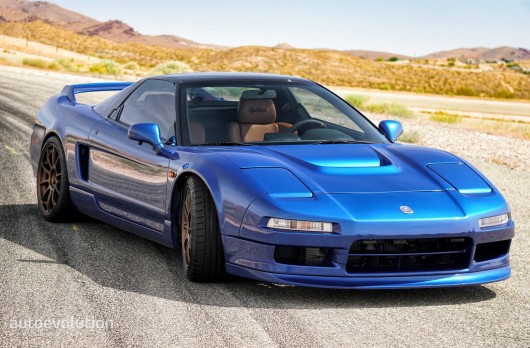 1991 Acura NSX
1991 Acura NSX
Before the whole world began to respect the Japanese auto industry, cars from the country of the rising sun, usually associated with cheap, disposable vehicles.
But then the Japanese for a short time, literally turned the world upside down and presented some amazing models that have become in many countries a cult.

For example, when the market came the Toyota 2000GT, Honda S600, a few stunning cars of Datsun and then a few cult models by Mazda, the Japanese automotive industry started talking differently.
But the real revolution, the Japanese introduced in 1989 when Honda / Acura was presented to the audience supercar NSX, which was positioned as a competitor to Ferrari.
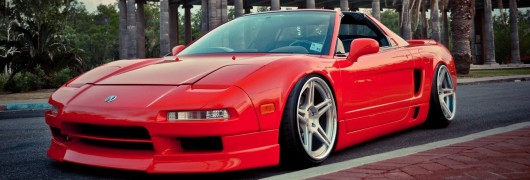
In addition, the manufacturer announced that the Honda / Acura NSX as reliable and as high quality as a Honda Accord.
It is noteworthy that the Italians really took the appearance on the market the first of a stunning supercar and hastily began to take measures to increase the reliability of the Ferrari cars.
For this they have completely changed the quality control of products.
They were followed by other popular manufacturers of super expensive sports cars. So today the world is reaping the fruits of the company Honda, which really proved that Japan is able to create competitive high-tech cars.
8) Turbo and diesel Japanese engines
 The twin-turbo 3.0-litre V6 in the Infiniti Q50 has become one of the best engines in 2016
The twin-turbo 3.0-litre V6 in the Infiniti Q50 has become one of the best engines in 2016
Who said that Japanese automakers are not able to create advanced powertrains? Look at the latest rankings of the best engines that publish various prestigious agencies, car magazines and experts.
In this ranking you will find many Japanese engines ranging from diesel powertrains and ending with the stunning hybrid motors.

For example, such motors in Hybrid Honda Accord, Mazda CX-9 and the twin-turbo V6 in the Infiniti Q50 combines the perfect balance between power, torque, noise, fuel economy and new technologies.
Also we continues to amaze with Honda, which this year introduced a new turbo motor installed in a sports version of the Type-R Civic Si.
9) the Boom in the classics
Live Japanese classics Nissan Skyline “Hakosuka”
Currently there is a boom in old classic cars, not only in our country. The demand for classics is exceeding supply worldwide. And surprisingly the Japanese car industry has something to offer fans of the old classic cars.
Currently, several countries literally observed the explosive demand for old Japanese cars. In our country, the public also gradually joined this world trend.

Understand that it only fuels the demand for all types and classes of cars that was produced by Japanese brands. The more consumers see on the road of Japanese cars, the more they begin to think about buying Japanese cars. Especially when on the road there are often old Japanese cars. In this case, consumers start to think that Japanese vehicles are more reliable and better.
And indeed it is. Pay attention to the road and you will see that Japanese old cars are a lot more American and German.
10) Sensational future
 Modified Honda Civic was presented at SEMA 2016
Modified Honda Civic was presented at SEMA 2016
Someone probably thinks that Japanese cars have become boring and uninteresting and that the future of Japanese brands in question. Indeed, many believe that the Korean auto industry literally comes on the heels of the Japanese. But it’s not.
Believe the Korean car companies are still very far from Japanese automakers. And despite the fact that Koreans only 10 years could make that for 30 years has made the Japanese car company, this does not mean that in the future the Koreans will not have problems. After all, smoothly the auto business to always be.
So we do not think that Japanese brands give even a tiny fraction of Koreans. Still, Japanese cars, that’s another story.

In General, all of the Japanese automakers well. For example, sales of Japanese cars are rising around the world. Especially in the United States and China. Plus Japanese car brands are constantly improving technology and ready soon to show us an amazing future world.
For example, fuels the interest in the Japanese car industry, the revival of the Toyota Supra, which will soon appear on the market. Also recently, the company Honda has updated the Honda Odyssey minivan, surprising the public with new technologies.
Company Nissan is developing a new turbo engine that will be able to compete with many of the German manufacturers.
Company Mazda already that year received various awards for beautiful design of its cars, and also received prizes for the quality of its products.
Also recently, the company Mitsubishi has joined the Renault-Nissan Alliance, creating the largest affiliate car company in the world. So in any case soon we will see a lot of amazing autonomies from Mitsubishi, Nissan and Renault.
